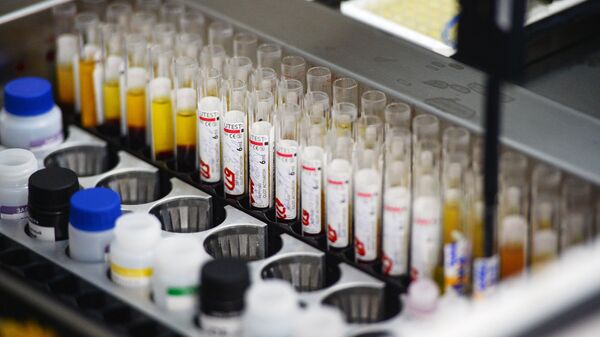Russian President Vladimir Putin has ordered the doubling of the availability of antiretroviral therapy for people diagnosed with HIV to 90 percent, Russian business newspaper Kommersant has reported, citing a list of instructions to the relevant authorities said to have been signed by the president on December 31.
The instructions ask officials to negotiate with drug companies to knock down prices and to organize the centralized procurement of medications. The government has also been given until July 1 to develop and approve a new comprehensive strategy to fight HIV up to the year 2030, taking account of the recommendations of the World Health Organization. These include starting antiretroviral drug treatment immediately after diagnosis, and pre-exposure prophylaxis in the form of a pill for individuals with a high risk of exposure.
In addition, the president has asked for a special focus to be paid to key risk groups (drug users, sex workers, prisoners, homosexual men, etc.), along with the creation of new prevention programmes, as well as funding for these initiatives. These include the idea of screening people for HIV during medical examinations, provided that they give consent, with confidentiality guaranteed.
Russia’s Rospotrebnadzor consumer protection and human wellbeing watchdog estimates that there are 1.06 million people living with HIV in Russia. Some 36 regions of Russia report HIV prevalence rates of 0.5 percent of the population or higher, with the majority of diagnoses made among adults aged 30-49 years old (which accounted for 70.9 percent of new cases in 2019). According to the watchdog, in addition to high-risk groups, one of the problems associated with HIV has been a lack of education campaigns among the general public, including the promotion of safe sex.
Russia’s battle with HIV has its roots in the early 1990s when, in the immediate aftermath of the Soviet collapse, the country was flooded with heroin from Afghanistan, sex tourists from abroad, and looser social mores encouraging casual sex. With the spread first limited mainly to heroin users sharing needles and syringes, the virus soon spread to other social groups, reaching over 100,000 infections by the year 2000.
HIV has been a major problem in virtually all post-Soviet countries, with some managing to combat the virus more effectively than others. Azerbaijan, where the prevalence of the virus was just 0.1 percent of the population as of 2019, has been held up as a model, owing to the republic’s self-sufficiency in the production of anti-viral therapy medications, broad outreach programmes, wide screening procedures and the provision of needles, syringes, prophylactics and counselling to HIV-positive individuals, including a separate hospital for HIV-positive prison inmates.




